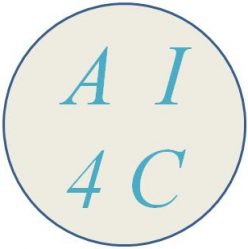The seminar is on February 10th 14:00 and will be held remotely.
Link to the zoom session: https://us02web.zoom.us/j/88657656183
Sophie Giffard-Roisin presentation is entitled:
« Machine learning and natural hazards »
The goal of this talk is to show how we can use the strength of artificial intelligence to help making diagnosis and finding concrete and local solutions to natural hazards. Tropical cyclones, avalanches, earthquakes or landslides affects often vulnerable areas and populations, where the understanding of the phenomena and better risk assessment and predictions can make a substantial impact. The data available to monitor these natural phenomena has considerably increased in the recent years. For example, SAR (synthetic aperture radar) imaging data, provided by the Sentinel 1 satellites, is now freely available up to every 6 days in a majority of regions, even remote areas. Yet, artificial intelligence (AI) and machine learning (ML) have only scarcely been used in these domains. But these techniques have already showed their impact in many scientific fields having similar data structures (large volume of data, presence of noise, complex physical phenomena) such as medical imaging (detection/segmentation of pathologies), crop yield (prediction), security (recognition). We will see in this talk, with concrete examples, how to design machine learning models for specific tasks with real imaging or temporal data inputs. Concretely, starting mainly from convolutional neural networks, what are the key aspects to consider and what are pitfalls to avoid?
Short bio:
Sophie Giffard-Roisin is a researcher hired by IRD (French National Institute for Sustainable Development) and based at ISTerre, Grenoble (UGA, France). Her work focuses on machine learning applications for natural hazards, especially using remote sensing and time series data. She did her PhD at Inria, Nice (France) under the supervision of Nicholas Ayache on machine learning and modelling for medical image analysis. Then she did a post-doc in CU Boulder, Colorado (USA) in Claire Monteleoni’s team where she worked on climate and meteorological applications of machine learning. She moved to ISTerre, the Earth Science Laboratory of Grenoble Université (UGA, France), for a permanent position in 2019 where she now focuses on machine learning for natural hazards in geosciences.
